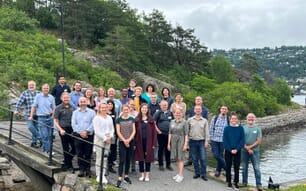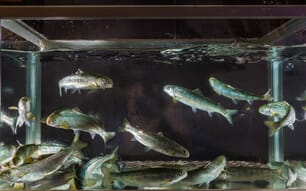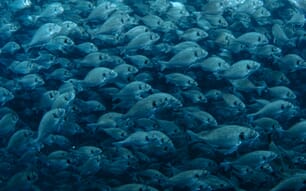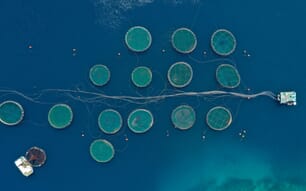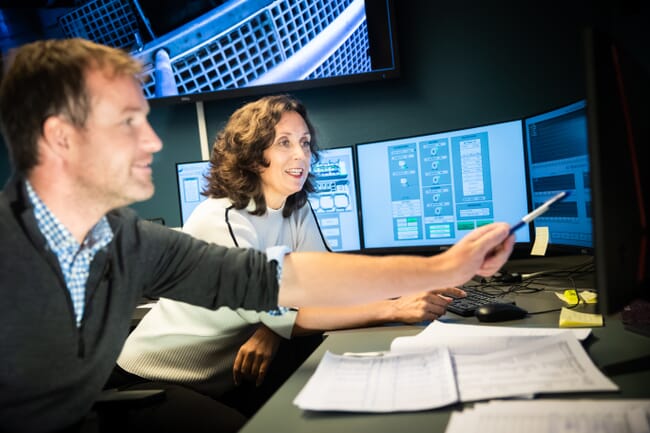
I am the manager of Nofima’s Research Station for Sustainable Aquaculture, and digitalisation is an important part of my everyday work. Let me explain.
The quality of aquaculture trials is fundamental in relation to scientific results. It doesn’t matter how great the analyses are that we carry out on the collected material, it is the quality of the trial itself that is crucial regarding all further results. Digitalisation increases the quality of trials.
Digitalisation is about using technology to innovate, simplify and improve. It is about providing new and better services which are easy to use, efficient and reliable. Digitalisation improves the operation of experimental stations by reducing and preventing non-conformities and noise that may occur during trials.
Extensive digital measurement of environmental factors
People often think of Big Data when they hear about digitalisation. I’ll get back to that. Firstly, I want to explain how we use digitalisation in our research to obtain precise measurement series. In relation to experiments involving fish, it is important to avoid variations caused by noise from the trial itself, while one would like to gain the correct biological variation in the factor/factors being studied and their interactions. Variations and unforeseen events may occur in biological production and in biological trials. By utilising digitalisation at Nofima’s research station, we have worked strategically to reduce the number and severity of any such events, reduce variations in our trials and establish the digital measurement of important environmental factors.
Safer operations
Just like many other research stations, we have developed over many decades, and each era has had its own technological level. Therefore, we possessed a patchwork of alarm and monitoring systems. We have now invested in a new, common alarm and monitoring system for the entire research station, where all trial tanks can be accessed from any control room located at the station. In addition, we have an agreement regarding 24-hour access to the supplier of these control systems, which has proved useful in several cases.
This control system provides us with several different warning levels. Many of the alarm points are able to provide both early warnings and critical warnings. Therefore, we can implement the necessary changes before receiving a critical warning that may lead to a trial non-conformity.
The research facility has a number of large and small pipes that transport fresh water, seawater and RAS water. Several digital flow meters have been installed on these pipes and are connected to alarm points. The facility is also designed with a system that is almost 100 percent redundant. This means that if incidents occur involving critical infrastructure such as pipes, electrical systems and pumps, we can transfer over to the parallel system. Therefore, the likelihood of the trial being negatively affected is significantly reduced.
Trials involving fish are carried out in several identical tanks. This is because there will always be some variation between each individual tank. The size of that variation affects how many experimental units must be used in the trial. Therefore, it is important to have as little variation between trial tanks as possible. The water that enters a department comes from a holding tank. Therefore, inlet water variations will only be small. The amount of water supplied to each individual trial tank affects the tank environment, such as the amount of oxygen and the tank’s self-cleaning mechanisms. Therefore, we have installed flow meters on the trial tanks. This provides stability in the supplied flow of water, not only at the start, but throughout the entire trial, without disturbing the fish. Previously, all tanks were standardised using volume/time measurements at the start of a trial. This work was physically demanding and time consuming, taking up to a day’s work. Now, however, standardising a trial can be done in approximately twenty minutes, and flow can be monitored throughout the entire trial period.
The research station also has online sensors that measure oxygen levels in all critical points and trial tanks, all connected to the alarm system. Better sensors are constantly being developed for measuring different parameters, and these are being used at the research station. This new technology includes online pH measurements, CO2, conductivity and light intensity measurements. Based on experience, the introduction of each new type of sensor will require a certain amount of work on establishing supervision, maintenance and calibration standards. Internal training of operations and research technicians is time well spent in terms of avoiding alarms due to sensor failures that occur after normal working hours.
Big Data and causalities
Causality can be established by digitally collecting data and using advanced computer programmes. This is often what most people think of when we talk about digitalising the aquaculture industry, the use of so-called Big Data. Big Data analysis is already being used by several producers and researchers. One can compile data from several different datasets generated from the same trial, and then analyse them. Furthermore, one can gather datasets from different experimental trials and analyse them collectively. In this way, new knowledge and new hypotheses can be created.
The research station has now adopted FindIT, a type of software developed through an EU-funded project for collecting and structuring data from aquaculture production. We also use the DataMaestro software for benchmarking and data analysis/data mining. These types of software are commercially available. At the same time, there are several other types of software and services that are established or under establishment. We use these two types of software to improve the production quality of trial fish, and we will also use them to record experimental trial data.
These are all examples of digitalisation in aquaculture that ensure a high level of quality in experimental trials at Nofima’s Research Station for Sustainable Aquaculture. We use digital measurements to avoid non-conformities, we document what has actually happened in trials throughout the entire day, and we obtain composite data for further analysis. Our goal is that the digitalisation of the research station provides increased research quality, and is of value for Nofima’s scientists and our partners in academia and the industry.
Competent employees
Digitalisation places demands on both management and employees. Skills development is about further developing the knowledge, skills, abilities and attitudes that employees need in order to meet their own requirements and the requirements of their workplace. We have introduced increased co-determination and job autonomy, while developing increased digital competence. This has given both Nofima and its employees a boost.
Further information
Nofima's land-based research facility can operate with fresh water, seawater and recirculated water, to conduct biological and technological trials within aquaculture’s entire value chain. The research station is located in central Norway, at the heart of Norwegian salmon production. It has research facilities for nutrition, formulated feeds, physiology, breeding, recirculation, radiography and metabolism studies. The station also has its own laboratory for analysing water, feed and fish.
Currently, research activity is carried out in six halls with a total floor area of 6,500 m2. The centre has over 1,000 trial tanks and 600 hatchery units. The main areas of research at the station concentrate on salmon, but it is also licensed to work with trout, halibut, cod, wrasse and lumpfish. The water temperature is controlled with heat pumps, exchangers, coolers and district heating. Nofima’s Centre for Recirculation in Aquaculture (NCRA) is also located at the same station. The centre was built in 2010 and is equipped to test technology and study farmed fish in recirculating aquaculture systems (RAS). Nofima is a participant in AquaExcel 3.0, a Horizon 2020 research infrastructure project, and the research station is part of this common network.

